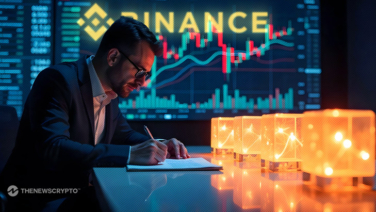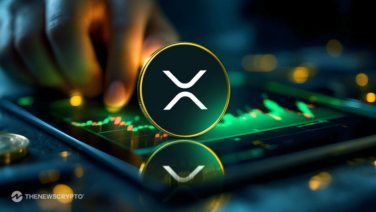- XRP community figure claims Binance holds only 4 million XRP on order book currently.
- OTC market supply drying up as most investors prefer holding tokens over selling.
- Software engineer explains thin liquidity could cause sharp price moves on large purchases.
A prominent XRP community member has highlighted what appears to be tightening liquidity for the token on major exchanges. Software engineer Vincent Van Code suggests that restricted supply could create conditions for sharp price increases.
XRP has recently climbed above $2.6 after days of sideways trading. While the recovery appears encouraging, some community members point to a potential supply crunch that could drive prices higher in coming periods.
Van Code specifically referenced liquidity conditions on Binance, claiming the exchange currently holds approximately 4 million XRP on its order book, though this figure remains unconfirmed.
OTC markets face supply constraints
Large investors typically avoid creating price spikes by purchasing through over-the-counter or wholesale channels rather than trading directly on public exchanges. These private markets allow major participants to execute sizable transactions without causing sudden market movements. OTC deals generally occur off-exchange at negotiated prices, maintaining market stability and preventing panic-driven fluctuations.
Van Code noted that conditions in these private markets are shifting. He stated that supply in OTC and wholesale markets is decreasing because most holders now prefer keeping their XRP rather than selling. With this supply restriction, even large buyers face difficulty securing sufficient tokens without pushing prices upward.
Trading bots currently help manage smaller market purchases to prevent sharp price jumps, according to the engineer. “It will be interesting to see what happens next,” he stated regarding the evolving liquidity situation.
One investor responding to Van Code’s analysis described the OTC market as the “canary in the coal mine” for XRP liquidity. The commenter explained that if major holders can no longer acquire 10 million XRP without driving prices substantially higher, it signals that available supply has nearly disappeared. The individual compared current conditions to a slow build preceding a strong rally.
How OTC trading functions for institutions
Another community member questioned whether OTC trades provide large investors with advantages over retail traders, asking if such arrangements constitute manipulation. Van Code clarified that the mechanism does not translate to market manipulation.
He explained that attempting to sell 5 million XRP directly on the open market would immediately crash the price and cost the seller 5% to 10% in losses. Instead, the seller contacts an OTC dealer who connects them with a buyer seeking a similar or larger quantity.
Van Code added that this example demonstrates why thin order books and low liquidity often cause delays or large price swings during sizable transactions. This problem represents precisely what XRP and the XRP Ledger were originally designed to address through efficient cross-border value transfer mechanisms.








